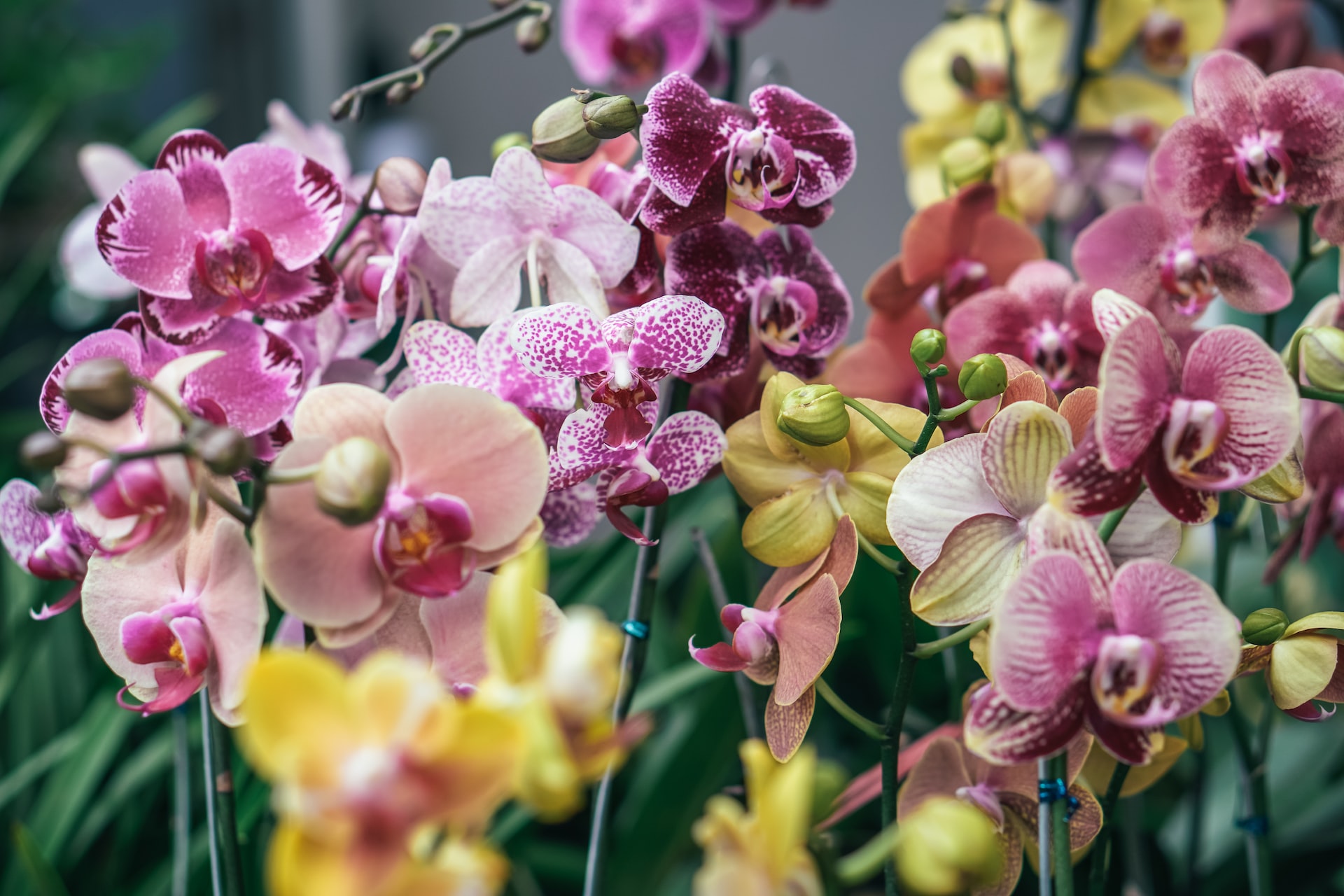
Table of Content
Orchids are some of the best types of flowering plants that can significantly improve the aesthetics of your room or space. While orchids mostly thrive in environments with enough humidity and shade such as rainforests, they can also be grown indoors. If you follow the correct guidelines and tips, you’ll be surprised to find how orchids can be grown successfully indoors.
About Orchids
Orchids (Orchidaceae) are a highly coveted ornamental plant. It is a calming plant that is graceful, delicate, and exotic. Orchids symbolize love, beauty, and strength. Having more than 30,000 species found in the wild and 120,000 hybrid or man-made orchids, they’re considered among the biggest groups of flowering plants worldwide.
Orchids grow on trees, on rocks, and even on the ground, having aerial roots that are thick, and store water through their stems or leaves.
If you’re looking to grow orchids indoors, you can choose from a wide variety depending on your preferred size, shape, growing condition, fragrance, and other traits. There are many orchids that can thrive indoors. Whether you are an orchid fancier or you are a first-timer, with the right steps, you can grow orchids at the comfort of your home to add that exotic and luxurious calming beauty to your home. We’ve come up with the top 5 indoor orchids that you can consider for your home based on size, shape, color, and scent.
Cattleya Orchid
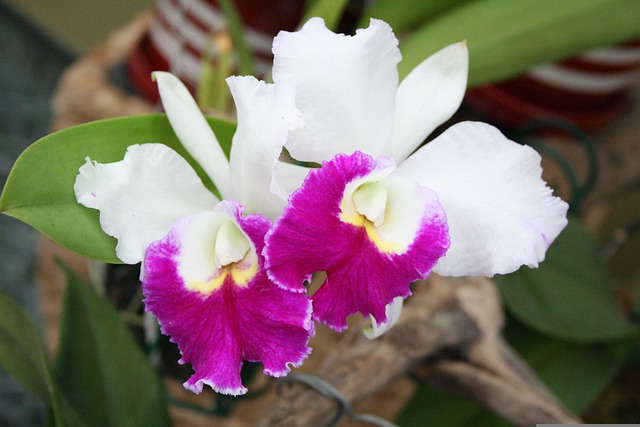
Probably among the most popular variety of orchids is the Cattleya orchids, also known as the “Queen of Orchids” because of their highly distinguishable features and fragrance. Whenever orchids are mentioned, the Cattleya is usually what comes to mind first. This variety of orchids consists of a considerable range of colors along with shapes and different sizes.
Just like any other orchid, it has water-storage organs known as pseudobulbs, along with thick spongy roots that capture moisture and keep it well hydrated in all seasons. While Cattleyas are native to Asia, these orchids can also be found in Central as well as South America.
Among the best things about the Cattleya orchid is that it is quite easy to care for and can be grown outdoors where it is exposed to the sun. Furthermore, grows as well as blooms faster than other varieties of orchids.
Pros
- It has a wide variety of colors and fragrances
- Affordable and easy to find in the market
- Easy to care for
- Fast growth and bloom rate
Cons
- Seasonal blooming
- Short-lived orchids
- Requires bright light
Oncidium Orchid
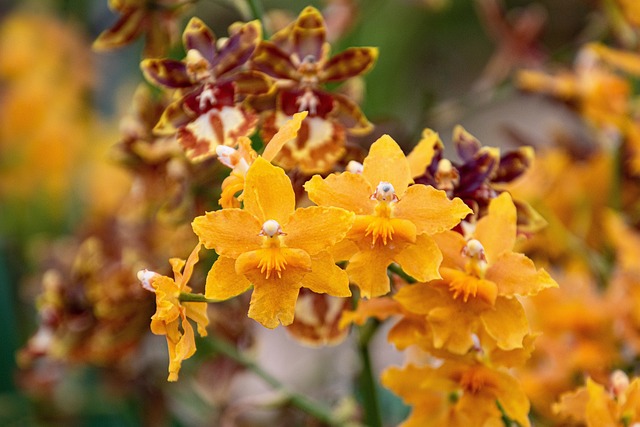
A variety of orchids that is excellent for those who love flower fragrances is the Oncidium orchids. While it is known for its unique fragrance, it is also loved for its small flowers having yellow tips as well as white or red lips. Among the most popular variety of Oncidium orchids is the ‘Sharry Baby’ Oncidium orchid which is a hybrid of two Oncidium orchids coming from Central and South America. It’s a unique variety among other orchids as it has smaller petals and a sweet chocolatey fragrance.
The flower colors can range from yellow-brown to dark purple depending on the amount of sun exposure. More sun exposure causes more dark spots on the leaves which is usually preferred by many.
The Oncidium variety of orchids is excellent for both beginners as well as orchid experts. While it is easy to take care of this orchid, it is also not very sensitive to temperature, water, as well as light. It is known for its fast growth rate as well as its ability to store a good amount of water which keeps it from drying out.
Pros
- Great for both beginner and expert orchid enthusiasts
- Popular for flower crossing
- Chocolate fragrance
- Fast-growing and blooming orchid
Cons
- Dark spots on leaves when overexposed to the sun
- Requires constant watering
Dendrobium
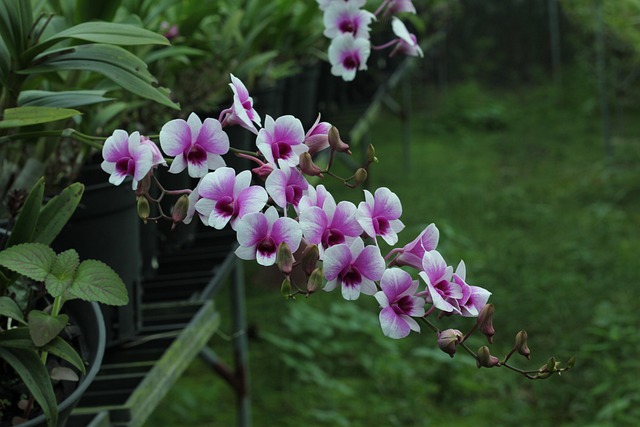
If you are passionate about dark shades of blue and purple on orchids, then you’ll find the Dendrobium an excellent option to consider. While the Dendrobium orchid is popular for its dark variety of colors, its hybrid varieties have other colors from pure white, yellow, and even a mix of both colors such as white-blue or white-purple.
One thing that is noticeably different from the Dendrobium orchid is that it has a tall and thick stem. Originating from Southeast Asia to India, Dendrobium mainly grows on other plants such as trees.
The Dendrobium orchid is also a great option to consider if you want profuse blooms out of your indoor plant. When it comes to Dendrobium orchid care, its assortment of species also calls for varying care needs. While some species require warmer conditions, others need less. Also, it may require prompt pruning to keep the plant flourishing.
Pros
- Can live long years with proper care
- Has profuse blooms
- Dark-pastel color petals
- Possible to grow all-year-round
Cons
- Too much water can cause leaves to wither and have spots
- Direct sun exposure leads to the browning of leaves
Paphiopedilum
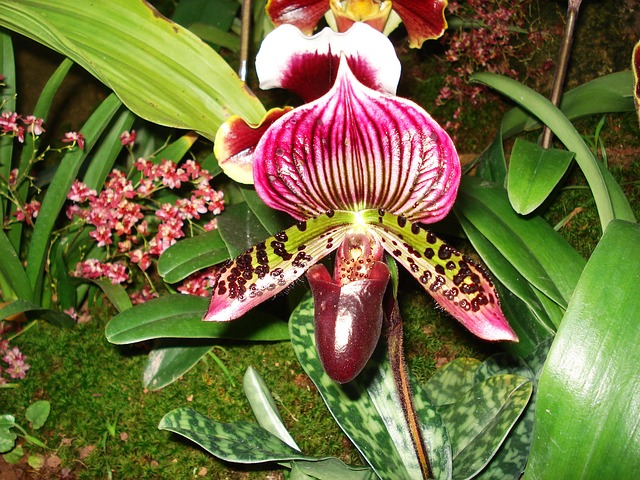
A unique variety of orchids which is known for their floral pouch is the Paphiopedilum – also called the slipper orchid. Compared to other orchid varieties mentioned in this list, the Paphiopedilum is an easy plant to care for and grow.
Unlike most orchids that grow on trees and rocks, the Paphiopedilum is generally found growing over the ground in rich humus. Its origins trace back to Southeast Asia, China, and India.
Paphiopedilum orchids don’t require much sunlight and can grow even in shaded areas. Unfortunately, this variety of orchids doesn’t have pseudobulbs or water storage organs, which is why it requires more frequent watering.
Pros
- Doesn’t require diligent tending or care
- Can grow even in medium lighting or indirect sunlight
- Doesn’t require fertilizers
Cons
- Requires constant watering
- Direct sunlight burns the plant
Vanda
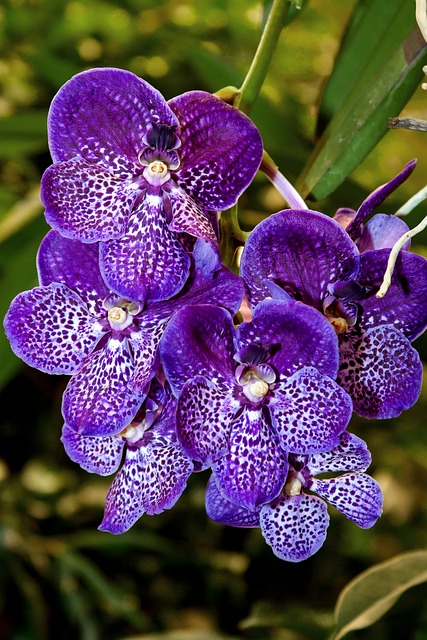
Last but not least in our list of indoor orchids is the Vanda orchid. While its bright blue flowers are among its distinct features, it is also among the few varieties of orchids that hang from trees by using its roots. When caring for this type of orchid, it is important to mimic the same way as it is found in the wild to bring out its best features.
The Vanda orchid is found in tropical Asia and since it grows on trees and rocks, it doesn’t have soil as a base for the roots. It can grow on tree bark, cracks on rocks, accumulated dirt or soil, and any organic matter.
Taking care of a Vanda orchid is not that complicated provided that the right conditions or preferences are met. It requires a good amount of lighting however avoid over-exposure to steer clear from withering. Also, avoid too much moisture when watering the orchid.
Pros
- Excellent hanging plants
- Can grow on other organic matters such as tree barks and rocks
- Blooms vibrant blue flowers
- Fast-growing under the right conditions
Cons
- Overwatering can lead to disfigured flowers with blisters
- Leaves dry up and turn yellow under excessive sunlight
Wrapping up
There is simply a plethora of orchid varieties to choose from – whether it’s a natural breed or cross breed of orchids. A good way to narrow down your options would be to have an idea of what you would like by considering features such as size, fragrance, color, water, and light requirement.
This will help you find that ideal indoor orchid that is right for you. At the end of the day, whatever variety you decide on, orchids can greatly improve the aesthetics and mood of your room or space.






